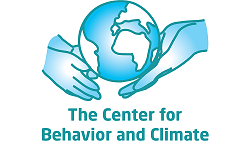Climate News - November 2020
Addressing Climate Injustice Improves Climate Solutions
Caroly Shumway, Ph.D.
The need for climate justice worldwide is evidenced by the fact that disadvantaged communities often bear the burden of natural disasters, suffer more from food shortages, air pollution, and excessive heat, and are less likely to be able to move in the face of climate crises such as sea level rise or flooding. "Climate justice is a term, and more than that a movement, that acknowledges climate change can have differing social, economic, public health, and other adverse impacts on underprivileged populations," notes Daisy Simmons on the Yale Climate Connections blog. Climate justice requires us to think deeply about connections among and between systems (e.g., the environment, human health, agriculture, energy, transportation, etc.), people, and solutions. Climate justice and its flip side, climate injustice, plays a role in all of them.
How does climate justice/injustice connect climate systems, people, and solutions?
For example, discriminatory lending practices of the past called redlining contributed to greater climate stressors such as increased air temperatures today in minority urban areas in the U.S.. Redlined geographic designations were areas with a high proportion of minority residents systematically denied mortgages or loans by banks and insurance companies. Historically redlined districts correlate to areas with fewer trees and green spaces than more affluent ones. The heat differential between the different neighborhoods can be as high as 12 degrees Fahrenheit (ClimateWire, Jan. 21).
Climate justice efforts work to address such inequities. These efforts also involve greater inclusion of diverse groups in the development of climate solutions--not at the end of a planning effort, but rather, from the very beginning. A global case study of adaptive governance initiatives, each arising from an emerging ecological crisis, showed that the successful systems built "a system-wide knowledge and awareness; enabled holistic coordination, negotiation, and collaboration across very large scales (at landscape or seascape scale); and engaged diverse competencies through involvement of both government and nongovernmental actors” (Schultz et al. 2015, cited in USAID, 2014).
Even cities renowned for progressive thinking neglected input from diverse communities. In 2013, Minneapolis, MN created an urban Climate Action Plan that in the beginning failed to include Native Americans and African Americans in the planning; upon hearing criticism from the community, an environmental justice working group that included these minorities was subsequently added to vet the document (ClimateWire, June 4). In contrast, Providence, RI involved environmental justice groups and diverse communities from the start. The solutions proposed in the plan wove climate justice concerns throughout its Climate Justice Plan (Grist, Nov. 1st, 2019).
What role can behavioral and social scientists play in addressing climate injustice? We can help to:
- Understand the evolutionary and psychological forces underlying marginalization of groups and increased cooperation so that we can minimize the former and increase the latter. Evolutionary anthropologist Brian Hare explores the origin of marginalization and cooperation in human societies in a new book, as reported by NPR (Oct. 31, 2020);
- Increase empathy of "the other": those we perceive to be in the outgroup, For example, recent functional magnetic resonance imaging studies (FMRI) show that dehumanization and dislike are processed in two completely different brain regions, which may help identify solutions for reducing intergroup hostility (Bruneau, 2018);
- Empower those marginalized to climate action through social norms and by enhancing a sense of response efficacy (a person's beliefs as to whether the recommended action will actually make a difference). Doherty and Webler (2016) found that these two factors alone explain a considerable 36-64% of the variance of public behaviors (such as voting, protesting, writing government officials, etc.); and
- Ensure that climate planning goes beyond gratuitous participation to true collaboration, with active engagement of diverse groups right from the beginning. Numerous studies have shown that diversity leads to increased innovation and improved decision-making (Phillips, 2014), exactly what climate solutions need.
